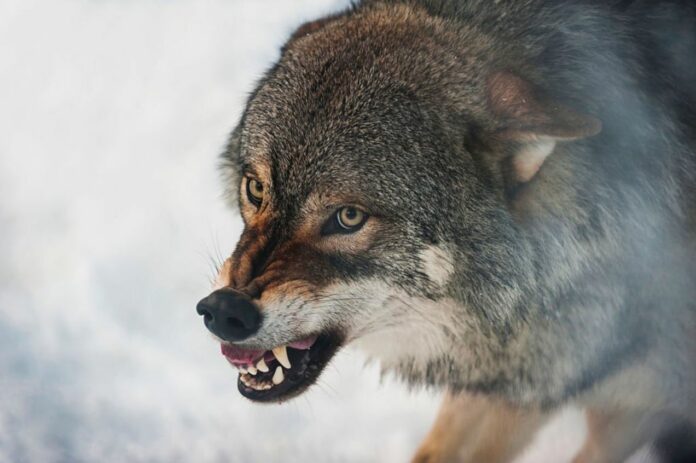Many canines are born with the ability to express love and warmth to their human companions. Now, an article published today in the journal Ecology and Evolution says that wolves also have the amazing ability to form strong bonds with people who care for them.
Researchers from Stockholm University in Sweden found this out by putting 10 wolves and 12 dogs through a behaviour test designed to measure attachment behaviours in canids.
In this test, 23-week-old wolves spontaneously distinguished between a familiar person and a stranger much like dogs did, with the familiar individual displaying more proximity seeking and affiliative behaviours.
Furthermore, the known person’s presence served as a social stress buffer for the wolves, relaxing them in stressful circumstances. These findings add to a growing body of evidence that refutes the theory that dogs only developed the skills needed to form attachments with people when humans tamed them at least 15,000 years ago.
As stated by Dr. Christina Hansen Wheat, PhD in Ethology from Stockholm University, Sweden, “We felt that there was a need to thoroughly test this.
“Together with earlier studies making important contributions to this question, I think it is now appropriate to entertain the idea that if variation in human-directed attachment behaviour exists in wolves, this behaviour could have been a potential target for early selective pressures exerted during dog domestication.”
Understanding how domestication impacts behaviour is something that Dr. Hansen Wheat is interested in.
She and her colleagues raised wolf and dog puppies from the age of 10 days and subjected them to numerous behavioural tests to investigate this.
In one of those tests, a familiar person and a stranger alternately enter and exit a test room to put the animal in an unsettling and uncomfortable scenario. The test was first made to measure attachment in human babies.
The idea behind it is that by making the environment unstable, attachment behaviours like seeking closeness will be encouraged.
In essence, the purpose of the Strange Situation Test was to determine whether or not wolves and dogs could distinguish between a familiar person and a stranger.
In other words, did they greet and make physical contact with the familiar individual more often than they did the stranger?
If wolves and dogs behaved in the same way, it would indicate that this skill is not particular to dogs and has not evolved that way.
“That was exactly what we saw. It was very clear that the wolves, as the dogs, preferred the familiar person over the stranger,” Dr. Hansen Wheat added.
However, what was possibly even more intriguing was that while the wolves were significantly impacted by the test scenario, the dogs were not. They walked around the exam room. The curious thing was that the pacing behaviour ceased when the familiar person, a hand-raiser who had been with the wolves their entire lives, returned to the test room, suggesting that the familiar person served as a social stress buffer for the wolves.
“I do not believe that this has ever been shown to be the case for wolves before and this also complements the existence of a strong bond between the animals and the familiar person.”
Dr. Hansen Wheat says that the similarities between dogs and wolves can help us figure out where our dogs’ behaviour comes from. And while it might come as a shock to some, she believes it actually makes sense that wolves can bond with humans in this way.
“Wolves showing human-directed attachment could have had a selective advantage in early stages of dog domestication,” she said
Now that three years of hand-raising wolves and dogs under identical settings have been completed, Dr. Hansen Wheat and her team will continue to analyse the data they have gathered to uncover even more behavioural distinctions and similarities.
Image Credit: Getty
You were reading: New Test: Human-directed Attachment Behaviour Exists In Wolves As Well
